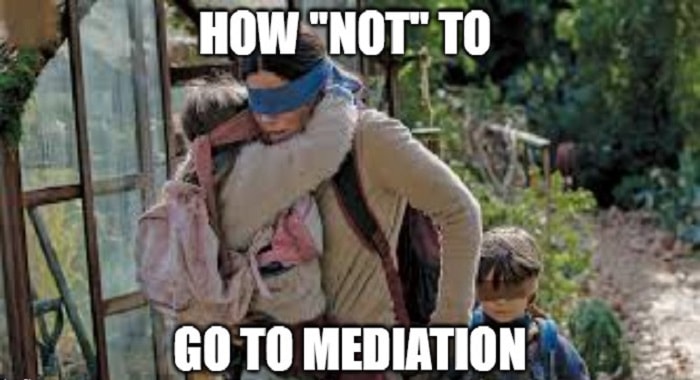Determining a child custody case is a process that can be challenging even for the judges.
This happens especially when the other parent is in deep disagreements over custody issues regarding their child or children.
Even on the first appearance, the judge is faced with make rulings based on very few facts presented by both parties.
The court is tasked with analyzing facts presented by both parents while putting the interests of the child or children at the forefront.
Most State laws will require the parents to have shared custody of their children but the most contentious issue is who will have majority time.
Guidelines Used to Determine Child Custody
In determining who will take the physical custody of the child or children, the judge considers different factors or guidelines that would serve to promote the best interests of the children. These include:
Joint vs sole custody
Joint custody gives both parents an equal share in making decisions regarding their child or children.
This is a collaborative way to ensure that the child or children spend half of their time with each of the parents. The court, before granting both parents equal share in raising the child or making decisions, will also consider other factors that we are going to discuss.
In sole custody, one parent is responsible for making all major decisions regarding the child or children.
The child also lives with one parent and the other parent may be granted limited access rights. A judge may, after considering several other factors, find out that the other parent is abusive and prone to physical violence.
When that is discovered, the court will do its best to protect the child from abuse and to give him or her a safe environment to grow and develop.
Age of the child/children
If the child is old enough to make his or her decisions, the court will listen and determine custody based on the child’s best interests.
On the other hand, the child may be too young (still breastfeeding) in which case, if the mother is not abusive, the child will likely stay with her for some time for the sake of the child’s needs at that young age.
Joint custody agreements (agreed orders)
If the parents have agreed on joint custody or other custody arrangements, the court will not interfere with their agreements. This may happen after mediation or the effort of the parents to solve their issues outside the court.
The agreements that have been reached will be ratified by the court (agreed order)for both parties to comply. It is assumed that mutual agreements work better for the interests of the child or children, and also save more resources and time.
In this situation, therefore, the judge considers the agreements of both parents and approves their agreements into a binding agreement for both parties to comply.
Best interest of the child
The interests of the child prevail in all circumstances. This is the main guide that every court must consider when deciding on child custody cases.
According to the United Nations Conventions on the Rights of the Child, Article 3, the child rights principle is well defined. It clarifies that the interests of the child are of primary consideration in all spheres concerning the children.
On this note, judges are well-educated and experienced to make decisions that would not negatively impact the child.
The ability of the parent
Is the parent able to cater to the needs of the child adequately?
If one parent is seeking sole custody of the child or children, the judges are inclined to assess the capability of the parent in terms of resources to ascertain whether he or she has the sole capacity to take good care of the child.
It is not only in terms of providing for the child’s physical needs but also whether the parent has the ability to nurture the child mentally, spiritually, and emotionally.
The parent should be able to understand the importance of both the physical and emotional well-being of the child.
Physical environment
The judge will assess the physical environment where the child will spend his or her time, the conductivity of the home environment, and other details.
The child’s physical environment will include:
- the home
- the neighborhood
- proximity to school
- friends and family support nearby
- distance to parents workplace
This comprises also of the daily routine the children are accustomed to as the court always prefers to avoid disruption to the child’s habits.
For the best interests of the children, the court will also look at the social amenities such as after school programs, hospitals, and playgrounds among other facilities.
Emotional attachment
The court will definitely assess the relationship of the child or children with each of the parents.
If the child is strongly attached to one parent emotionally, that parent may be favored by the court for the sake of enhancing the child’s best interests.
In some instances, the child may show some negative attitude towards one parent which can make it hard for the court to override the child’s preference.
But the court will also check to see if those negative feelings are being caused by a manipulative or abusive parent.
In most instances, the parent who is emotionally invested in the children has a better chance of being granted custody.
Relationship of the parents
Do the parents show the willingness to cooperate?
It is easier for the court to decide on a case where parents are willing to cooperate and compromise for the sake of the child or children.
If the parents are on good terms and can communicate issues in a peaceful civil manner, the court will be more likely to suggest joint custody.
The court will also assess the level of hostility of the parents towards each other if that is the case.
It is tough for the court to deal with adversarial parents who leave everything to the court.
When this situation presents itself, the judge may order one or both parents to attend parenting classes, anger management counseling, or mediation before rendering a judgement for custody.
The mental health of each of the parents
A decision by the court may not be arrived at before assessing the mental state of each of the parents, especially in a highly contested case.
An expert or third party may be used by the court to assess and report to the court the mental health of each of the parents. This serves to promote the interests of the child and avoid occasions where the judge will rule in favor of the parent who is mentally unstable.
If one parent is mentally disturbed, the expert may explain to the court the extent of the damage and suggest treatment, or supervised visitation depending on how it may affect the development and growth of the child.
Temporary custody after separation
Another important consideration is where the children were living at the time of actual separation or splitting up.
While the parents separated, the one who took custody before the case was filed may have better chances of winning custody.
This is not set in stone, many factors come into play at the time of separation, but this is definitely one gauge the court will rely on heavily in the initial decision.
If both parents showed up or collaborated in the efforts to meet the child’s needs, it will indicate that they are both responsible.
Therefore, when separating, make sure to stay involved on a daily basis with your children, and if possible have them living with you to begin with.
Work schedule of the parents
The work schedule of the parents is also a criterion that the court will use in determining custody.
As crazy as it sounds, many parents sitting on their butts at home will get custody while the other parent is working hard and paying all the bills.
Unfortunately, the court is concerned when a parent does not have much time to see the child, and the parent with more time will be chosen to stay with the child.
This will also depend on the age of the child. At a very young age, the child clearly should spend more time with a parent.
It is the role of the judge to understand the work nature of both parents and to make better decisions that would not favor any of the parents, but the child.
History of abuse or domestic violence
Some parents can be more hostile to the children during a divorce or just in general,and this can be a huge determining factor judges use to decide child custody cases.
If there is a history of abuse, neglect, and domestic violence by one of the parents, then the court will not want the child to stay in that toxic environment.
It is always in the best interests of the child to grow in an environment where he or she is safe and supported.
The court may use witnesses or experts to find out the facts about the reported cases of abuse and violence by one of the parents.

This will guide the court to make a better judgment that would favor the growth and development of the child or children both physically and psychologically.
Conclusion
These guidelines and others are used by judges to determine child custody cases that are of varied nature. It is not a perfect system, by any means.
This is why you need to have everything organized as well as possible before entering the courtroom.
The judges are tasked with making serious decisions affecting real families, with real lives, and real problems.
The more information they have to work with, the better they can protect the interests of the child or children.





